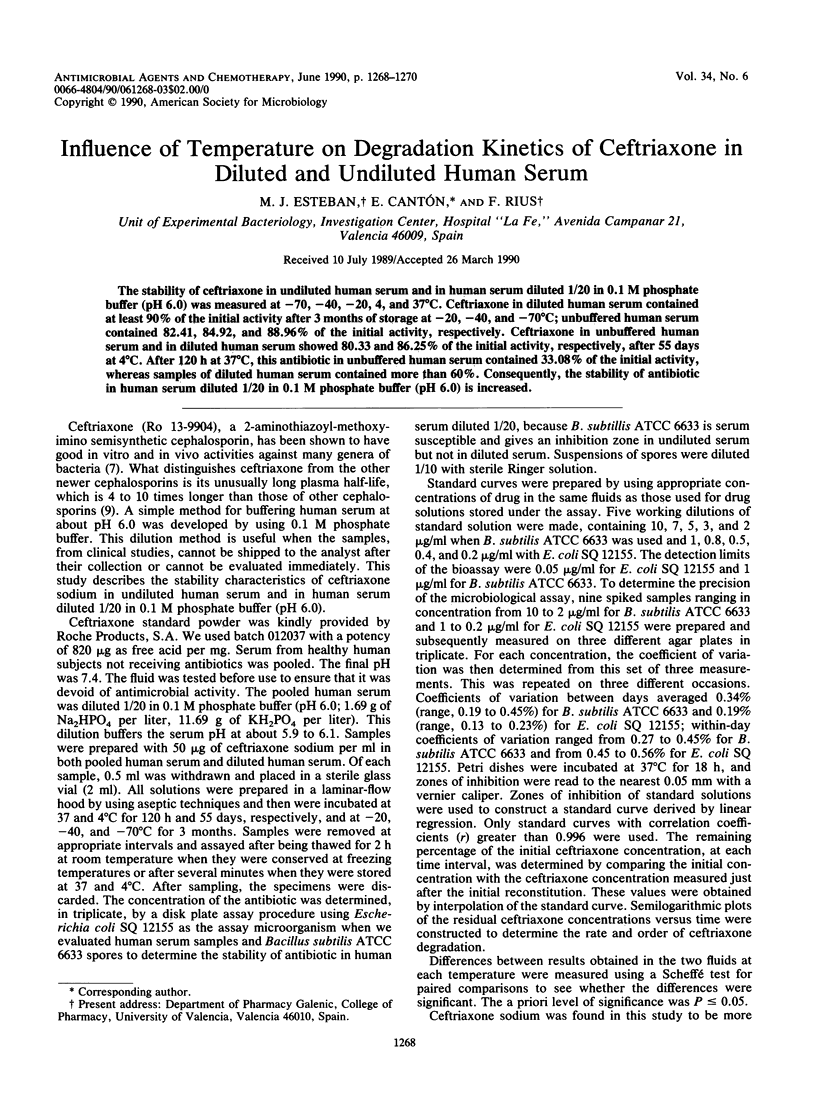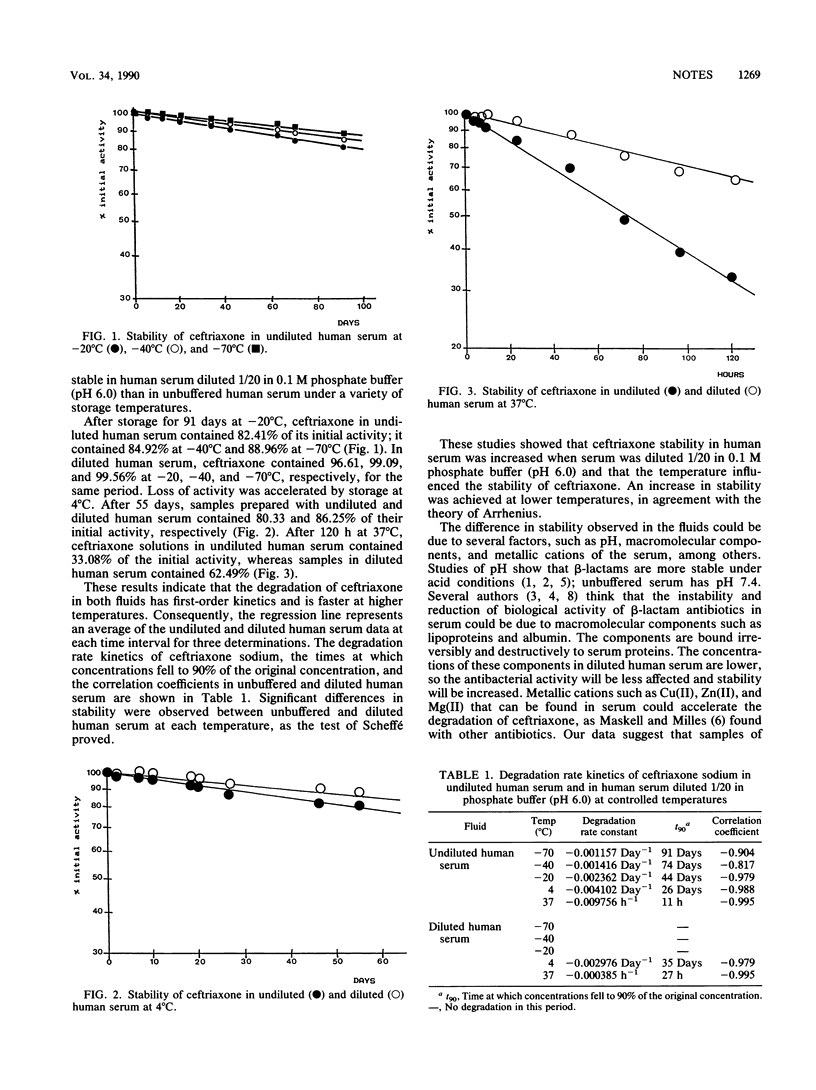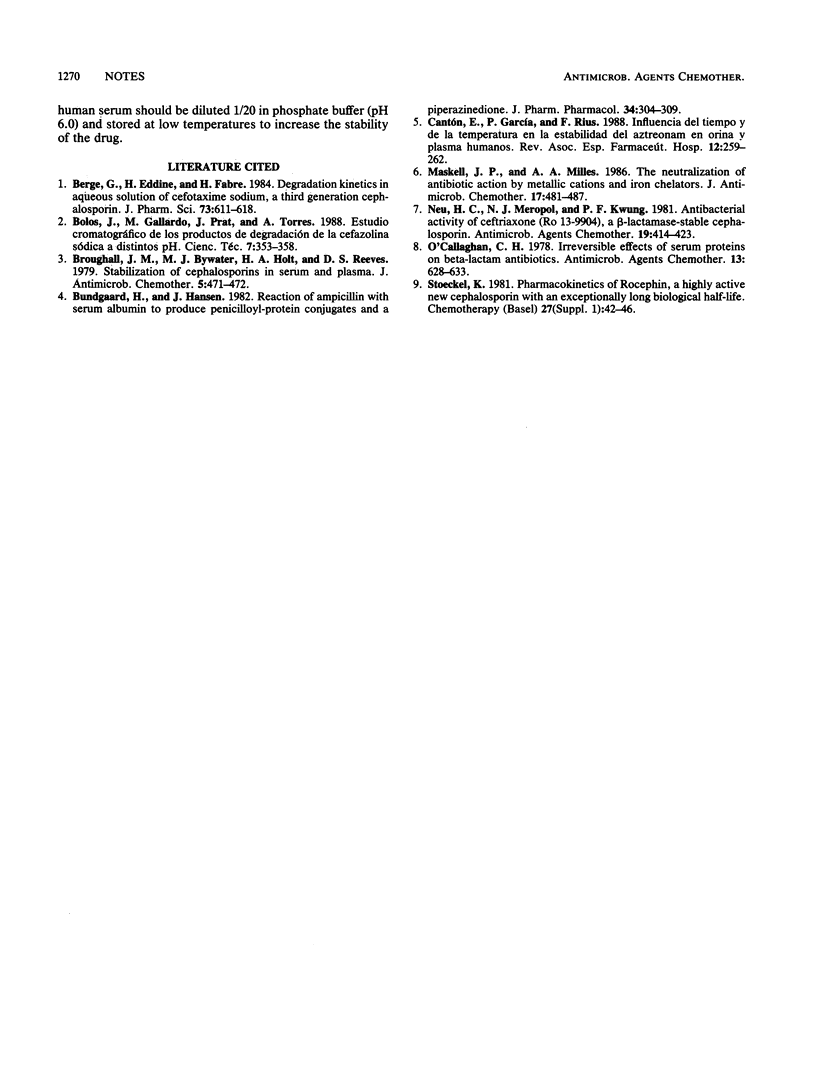Abstract
The stability of ceftriaxone in undiluted human serum and in human serum diluted 1/20 in 0.1 M phosphate buffer (pH 6.0) was measured at -70, -40, -20, 4, and 37 degrees C. Ceftriaxone in diluted human serum contained at least 90% of the initial activity after 3 months of storage at -20, -40, and -70 degrees C; unbuffered human serum contained 82.41, 84.92, and 88.96% of the initial activity, respectively. Ceftriaxone in unbuffered human serum and in diluted human serum showed 80.33 and 86.25% of the initial activity, respectively, after 55 days at 4 degrees C. After 120 h at 37 degrees C, this antibiotic in unbuffered human serum contained 33.08% of the initial activity, whereas samples of diluted human serum contained more than 60%. Consequently, the stability of antibiotic in human serum diluted 1/20 in 0.1 M phosphate buffer (pH 6.0) is increased.
Full text
PDF


Selected References
These references are in PubMed. This may not be the complete list of references from this article.
- Broughall J. M., Bywater M. J., Holt H. A., Reeves D. S. Stabilization of cephalosporins in serum and plasma. J Antimicrob Chemother. 1979 Jul;5(4):471–472. doi: 10.1093/jac/5.4.471. [DOI] [PubMed] [Google Scholar]
- Bundgaard H., Hansen J. Reaction of ampicillin with serum albumin to produce penicilloyl-protein conjugates and a piperazinedione. J Pharm Pharmacol. 1982 May;34(5):304–309. doi: 10.1111/j.2042-7158.1982.tb04712.x. [DOI] [PubMed] [Google Scholar]
- Fabre H., Eddine N. H., Berge G. Degradation kinetics in aqueous solution of cefotaxime sodium, a third-generation cephalosporin. J Pharm Sci. 1984 May;73(5):611–618. doi: 10.1002/jps.2600730508. [DOI] [PubMed] [Google Scholar]
- Miles A. A., Maskell J. P. The neutralization of antibiotic action by metallic cations and iron chelators. J Antimicrob Chemother. 1986 Apr;17(4):481–487. doi: 10.1093/jac/17.4.481. [DOI] [PubMed] [Google Scholar]
- Neu H. C., Meropol N. J., Fu K. P. Antibacterial activity of ceftriaxone (Ro 13-9904), a beta-lactamase-stable cephalosporin. Antimicrob Agents Chemother. 1981 Mar;19(3):414–423. doi: 10.1128/aac.19.3.414. [DOI] [PMC free article] [PubMed] [Google Scholar]
- O'Callaghan C. H. Irreversible effects of serum proteins on beta-lactam antibiotics. Antimicrob Agents Chemother. 1978 Apr;13(4):628–633. doi: 10.1128/aac.13.4.628. [DOI] [PMC free article] [PubMed] [Google Scholar]
- Stoeckel K. Pharmacokinetics of Rocephin, a highly active new cephalosporin with an exceptionally long biological half-life. Chemotherapy. 1981;27 (Suppl 1):42–46. doi: 10.1159/000238028. [DOI] [PubMed] [Google Scholar]


